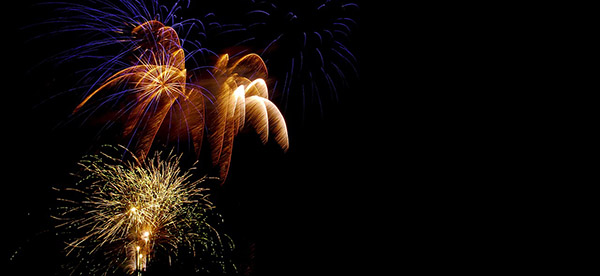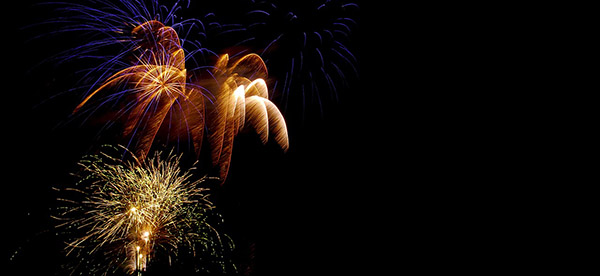
How to keep your tribal fireworks display safe
No matter the occasion or event, fireworks are a great way to celebrate and attract visitors. Fireworks bring with them the potential for explosive risk for your tribe, however, so be sure to put the safety of the operators and spectators first. Below we’ve listed a number of tribal fireworks display safety tips to help with your pyrotechnics planning and execution.
In 2016, an estimated 300 people were injured during public fireworks displays commemorating July 4th, says report by the Consumer Product Safety Commission (CPSC). Additionally, every year nearly 10,000 people are treated in emergency rooms for consumer fireworks-related injuries. The estimated cost of these injuries: more than $100 million annually.
When tribal governments are responsible for overall planning and control of a public fireworks display, removing all liability they may face is difficult at best. All affected departments and services should work together with their tribal risk manager to help reduce the level of risk the tribe may face when hosting pyrotechnic displays.
Start planning now for fireworks display safety
Use a professional operator. Consider outsourcing your fireworks, even though tribal employees may have experience in fireworks displays. That way, you can transfer much of the risk to the operator. As you interview possible operators, consider their:
- Depth of experience and certifications
- Familiarity with Department of Transportation requirements for fireworks delivery, state permits or certifications, and provisions related to NFPA codes 1123, 1124 and 1126.
- Proposal for your specific event, particularly with regards to safety
Spread the responsibility. As mentioned earlier, bring representatives from every entity into your planning session, including parks & recreation, fire/police/EMT and your risk manager. Brief each member of your planning team on pyrotechnics safety guidelines by the National Fire Protection Association. Check with your insurance agent or Arrowhead’s Tribal Insurance Program as to whether additional coverage for the fireworks event is needed.
- Carefully prepare your contract. Enlist the aid of your tribal’s legal counsel to prepare the contract (for further details, review our earlier blogpost, Best Practices For Avoiding Contract Liability For Your Tribal Entity). Although the contract will not completely absolve your tribe of responsibility, it will significantly lessen your liability exposure. When preparing your contract, Argo Group suggests that it addresses these areas:
- Vendor obligation to follow all applicable laws and regulations.
- Vendor responsibilities for planning, permitting, pyrotechnic transportation and storage, event setup and execution, cleanup and site inspection.
- Minimum insurance coverage and limits of liability.
- Adequate indemnity and hold harmless clauses.
- What happens in the event that the display is canceled.
Related: Tribal Park Maintenance Safety Tips
Carefully choose your site. The area chosen should be clear of any obstructions including dry, potentially flammable grass, wood, or debris. We also suggest you monitor your state’s wildfire warnings to make sure there isn’t a fire weather watch in effect. These warnings occur during extended periods of dry weather and higher-than-average wind speeds. During these conditions, lighting fireworks could lead to potentially lethal wildfires. You’ll also want to identify spectator areas, parking and emergency pathways. Finally, identify your fallout zone and how you’ll keep spectators out of that area.
Additional tips for fireworks display safety
If professional operators are unavailable for your firework displays, the following safety tips will help keep you and your audience safe.
Store fireworks safely. Use the fireworks as soon as possible after purchase; don’t store them for extended periods of time. When storing fireworks, keep them in a cool dry place out of the reach of children.
Don’t experiment with fireworks. Every year, injuries and deaths from fireworks occur because people tampered with the firework’s original design. Occasionally individuals combine explosive materials from inside fireworks to create larger, more powerful fireworks. This is extremely dangerous. It can lead to unpredictable and hazardous results, including fatal accidents.
Light fireworks only on flat surfaces. Flat surfaces are particularly important when using fireworks that take off vertically. If the area where you are using fireworks is too uneven, they could tip over, go off horizontally or only a slight angle and severely injure someone.
Light fireworks carefully. Experts recommend using an extended butane lighting device, extended match, or some device that provides the maximum distance between the wick and you. Always light the wick at the very top and never light the wick in the middle or the bottom.
Once lit, back away. Once the firework is safely lit, stand a safe distance away before, during, and after the launch. Do not lean over fireworks or stand too closely. If the firework doesn’t go off as expected, there’s a chance the firework is a dud or has malfunctioned, causing a delayed launch. Spectators should be at least 30 feet away from all fountain-style or spark-emitting fireworks. For all aerial fireworks, like mortars or bottle rockets, keep spectators at least 100 yards away.
Know how to handle firework duds. If a firework malfunctions, don’t attempt to relight it. Allow it to rest for 15 – 20 minutes, douse it with water and let sit another 15 to 20 minutes. Next, submerge the firework in water and allow it to soak. Once the firework is completely soaked, it’s safe to dispose.
Have fire extinguishers ready. Keep a fire extinguisher or buckets of water nearby. At least one person should be responsible for operating the fire extinguisher in case something goes wrong.
Dispose of fireworks safely. Once a firework is used, allow it to rest for 15 to 20 minutes, then place it in a bucket of water to soak thoroughly. After a rest and soak period, it can be safely disposed of in a regular trash receptacle. Note: Don’t neglect either of these steps. If fireworks are not soaked properly, heat may be trapped inside causing re-ignition and a trash fire. Use caution when cleaning up debris from used fireworks, since certain parts may still be extremely hot, combustible or sharp.
After the fireworks. Plan for these steps to reduce your risk: Keep spectators out of the fallout area. Thoroughly search for unexploded firework duds and burning debris, following the safe disposal steps. The next morning, search again for any items that need to be properly disposed of.
Your tribe’s thoughtful and careful planning of your fireworks display, including safety measures, operator selection and risk transfer, will help your next event be fun and safe for everyone involved.
Sources:
NFPA Code for Fireworks Displays

